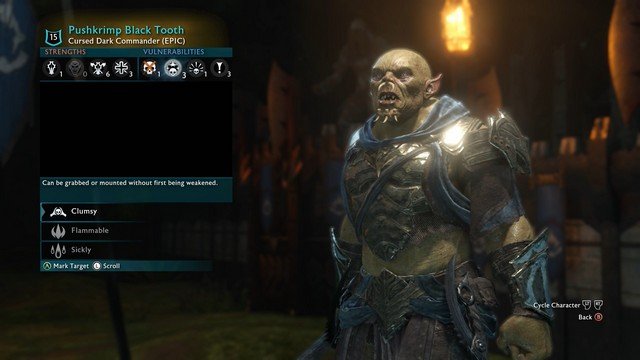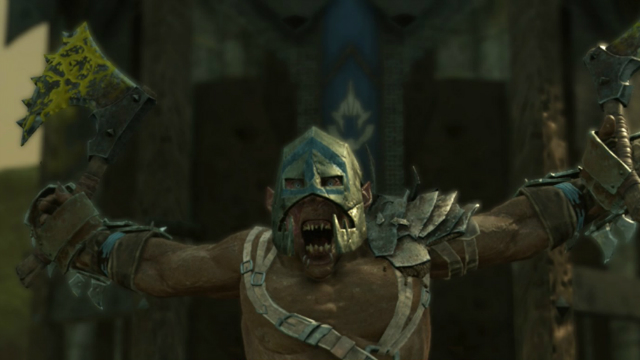The Nemesis System is the primary aspect that sets Shadow of War apart from other action-RPGs. The original game, Shadow of Mordor introduced the system, where randomly generated orc NPCs can interact with each other and the player throughout the game. The updated Nemesis System is expanded in almost every way in the newest game in the series, and we’ll run through the most significant changes below.
Also: 5 Tips I Wish I Knew Before Starting Middle-earth: Shadow of War
Middle-earth: Shadow of War Nemesis System: There’s room for more orcs.
The most straightforward change might be the most impactful. In Shadow of War, there are five areas that support a bigger roster of orcs in each, as opposed to the two regions in the original title. More orcs mean more encounters and more opportunities for the drama to unfold. It didn’t take long to run the gamut of orcs in Shadow of Mordor, but with five fortresses to defend you’ll meet and recruit new soldiers through the whole game.
Middle-earth: Shadow of War Nemesis System: There’s more superficial orc variety.
With so much more land to explore and conquer this time around Shadow of War could have ended up with a lot of repetitious orcs. However, there are a ton more components to randomly generate orcs now. During my play through the game, I met some orcs that I thought must have been unique, even though according to Monolith they’re all randomly generated.
You can go through the whole 40+ hours it takes to reach the ending without seeing the same kind of orc twice. There’s a lot of orcs that share archetypes, but for the most part, each captain’s looks and personalities differ from one another.
Middle-earth: Shadow of War Nemesis System: Orc traits are more varied.

Each orc captain has a set of traits that determine their strengths and weaknesses in combat. In Shadow of Mordor, this was limited to a few things like “Fears Caragors” and the like and a lot of orcs fought similarly. This time around there’s a ton of different types of warriors.
There are also now rarity tiers of orcs (something that has had a bit of controversy surrounding it). The new epic and legendary tier orcs can have more strengths, and sometimes more weaknesses, than ordinary grunts. Orcs can also gain new traits, either through battle or through Training Order items you can use on them.
Middle-earth: Shadow of War Nemesis System: There are more Domination interactions.
Talion can only recruit orcs that are his level or lower, but Shadow of War gives an alternative to just letting them go. A new action you can do to orcs is shaming. When you shame an orc their level decreases, and they relocate. Rarely though, they can either become broken, which destroys their personality and leaves them in a sorry mental state, or they can become frenzied and actually become stronger.
When Dominating orcs, you can also choose to have them fight alongside you. You can do the same thing from the Army screen by selecting them to be your bodyguard and calling them, as well.
Middle-earth: Shadow of War Nemesis System: Orc relationships with each other are more complex.

Orcs aren’t just static characters waiting for Talion to act on them. They forge relationships with each other behind the scenes. Sometimes you’ll find that two orcs have become blood brothers, which gives them a combat bonus when fighting together. However, if Talion harms one blood brother, the other, even if they’ve been dominated, will attempt to avenge him.
Orcs can also form rivalries. When two orcs are rivals, they gain unique dialog when encountering each other and will put attacking each other above all else.
The Nemesis System may expand even more in the DLC. We know that at least one new orc tribe will be added to the game, and with them might come further changes in the dynamic between the orcs and how they interact with Talion.







